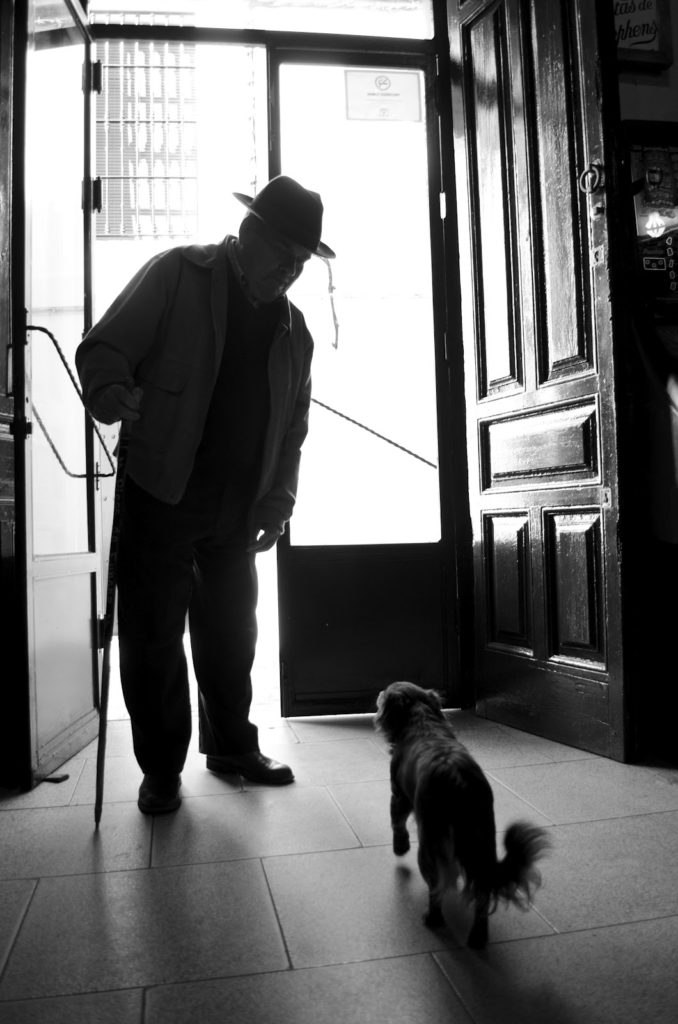By Tom Smith
Cinematography means two things today. In the industry it means photography with a movie camera. To the masses it often means anything involved in making a movie.
The literal definition means “cinema writing,” which ought to suggest that all aspects of movie-making are included. In the professional world however, the director of photography or cinematographer is the one in charge of exposing the film and the lighting department, thus including only the image.
Either way, here’s a short Tom Smith education in what you need to do to make compelling images.
Let’s start with the most basic principle of all things: philosophy. Why do images matter? More important than your images is your message, right? If you don’t like the story or moral of a film it doesn’t matter how high the production value may be – you still won’t like it. But that aside, vision immerses an audience in a story by providing authenticity. For, as people, we rely most on our sense of sight.


Here’s two photos of a ruined altar I found below the Piazzale Garibaldi in Rome, south of the Vatican. I was studying abroad in the Italian capital for a photography class. I’d often go walking around town on my own taking pictures. I was teaching myself how to make images by trial and error and when I found this ruined altar I knew a great image was to be had somehow. I released my shutter 107 times.
The first image is really a pretty good photo, but the second image is exceptional. Why?
Film is made of three things: light, audio and (my personal favorite) time. We see an image, we hear sounds, but we also see how these images and sounds change as time flows.
Okay. So now we know why we’re concerned with the image. Then how do we capture it?
Here are some basics to consider whenever setting up the camera. They are my abridged rules for image-making. Any Intro to Photography class ought to teach about five or six principles, but these will help you develop the basic technique of composing images.
1. LIGHT. Illustrated in the two photos above, the quest of the cinematographer is to bring subjects to life by capturing them in a certain way. This way is often a matter of light. As the light rakes across the edges of the ruined altar in the second image we see it in a different light than the first. Also, we see more darkness in the scene, this makes a greater contrast. It is this specific light and contrast that communicate to us the grandeur and mystery behind that abandoned piece of architecture.

Here’s another image also characterized by stark light. An elderly man calls his dog, Zelda, in the small pueblo Carmona. I was spending a semester there studying Spanish. I left the lazy streets of Seville to take in a less metropolitan Spain. While meandering around this mysterious little village, I stepped into a small bar for a refreshment and a serious trial of my language skills. After our conversation I snapped this photo.
The light bursts into the scene characterizing the essence of the hot day, the years seen by the old man and the innocence of Zelda’s soft fur. And although I describe this still image, imagine it as a scene in a movie where time is also represented; the dog approaching the man and him reacting.
2. EXPRESSION. Even if you can’t capture your subject in the light you’d like, look for expression. A powerful performance by an actor is all the more convincing in a scene on a professionally lit stage, but the same performance would also be riveting if you saw an acting troupe performing on a city street in the afternoon. That’s because although the light would have changed, the actor’s voice, body language and facial expressions wouldn’t. This is what we must seek to record in our videos.
Above we see the curiosity of Zelda and the welcoming posture of the man to his small companion. Without the light it may not be so convincing, but, at a base level, the interaction between man and his best friend would not change.
3. COMPOSITION. Before I ever push the record button I make a point to look around the edges of my frame. Don’t just focus on the center, where your attention often is. What else are you including in your image? Remember your background is still part of your subject. Is there a telephone pole only visible out the top of your interviewee’s head? Maybe there’s half a sign visible? These things can distract our audience.
Look at the pinball machine behind the door in the photo, how the edge of the other door is close to the left side of the frame – but still included, see how much of Zelda and the man’s shadows show. With a photograph you can always crop in editing, but with a video that can really be a pain.
4. PROXIMITY. This isn’t often considered one of the rules for the photographer, but world-famous photojournalist Robert Capa said, “If your pictures aren’t good enough, you aren’t close enough.” I was maybe a foot and a half from Zelda when I snapped this picture. You can tell by the wide-angle perspective. Also, if memory serves me correctly, I almost missed this moment. I looked through the viewfinder and thought, “need to be closer.”
I like to think of this not so much as a rule but a backup plan. If the above techniques seem too hard to exploit and the philosophy escapes you – just get closer. Works every time.
About the author
Tom Smith holds a Bachelor of Fine Arts in Film, Photography and the Visual Arts from Ithaca College. He is an experienced videographer hailing from Morrisville (Bucks County) Pennsylvania. For more on how Tom can help your business engage with its audience through video, contact him at Tom@KatalinasCommunications.com.


